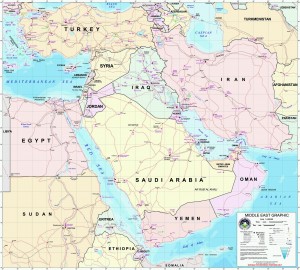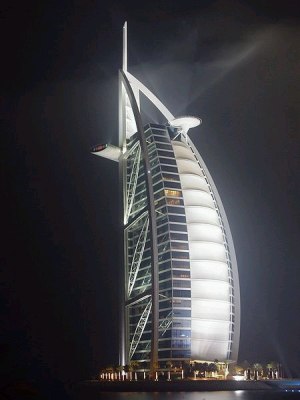
The World Bank’s World Development Indicators’ database published on July 1, 2009, the three largest Middle Eastern economies in 2008 were Turkey ($ 794,228,000,000), Saudi Arabia ($ 467,601,000,000) and Iran ($ 385,143,000,000) in terms of Nominal GDP.[27] Turkey ($ 1,028,897,000,000), Iran ($ 839,438,000,000) and Saudi Arabia ($ 589,531,000,000) had the largest economies in terms of GDP-PPP.[18] When it comes to per capita (PPP)-based income, the three highest-ranking countries are Qatar ($80,900), Kuwait ($39,300) and the United Arab Emirates (UAE) ($37,300). The lowest-ranking country in the Middle East in terms of per capita income (PPP) is the autonomous Palestinian Authority of Gaza and the West Bank ($1,100).
The economic structure of Middle Eastern nations are different in the sense that while some nations are heavily dependent on export of only oil and oil-related products (such as Saudi Arabia, the UAE and Kuwait), others have a highly diverse economic base (such as Israel, Turkey and Egypt). Industries of the Middle Eastern region include oil and oil-related products, agriculture, cotton, cattle, dairy, textiles, leather products, surgical instruments, defence equipment (guns, ammunition, tanks, submarines, fighter jets, UAVs, and missiles). Banking is also an important sector of the economies, especially in the case of UAE and Bahrain.
With the exception of Turkey, Egypt, Lebanon and Israel and Dubai, tourism has been a relatively undeveloped area of the economy, due in part to the socially conservative nature of the region as well as political turmoil in certain regions of the Middle East. In recent years, however, countries such as the UAE, Bahrain, and Jordan have begun attracting greater number of tourists due to improving tourist facilities and the relaxing of tourism-related restrictive policies.
Unemployment is notably high in the Middle East and North Africa region, particularly among young people aged 15–29, a demographic representing 30% of the region’s total population. The total regional unemployment rate in 2005, according to the International Labor Organization, was 13.2%,[28] and among youth is as high as 25%,[29] up to 37% in Morocco and 73% in Syria
Gulf States

The Gulf’s status as a leading producer of oil and derived products results in a total GDP of US$450 9 billion in 2005 equal to US$13,108 per capita. Despite this expenditure in the health care sector is relatively low, Just US$19. 8 billions in 2005, which represents 4 4% of GDP. The vast majority is in the public sector, private sector investing is highest in Saudi Arabia and the United Arab Emirates
Despite the relative wealth if the Gulf States, the health care sects has only recently became a priority for government investment. Compared to the G6 countries, there are far fewer hospitals beds and medical personnel in the Gulf States. The tertiary health care sector is relatively advanced but primary health care remains underfunded and basic with limited access in rural areas. The situation is set to improve with continuing investment in construction and renovation projects and the implementation of co-ordinated health care plans.
The market for medical devices in the Gulf States is estimated to stand at US$390 million in 2005, equal to USGS per capita. This market size is comparable to that of Poland; in per capita terms.
It is on a par with Latvia and Llthuania. It is predicted that the market will expand at 5% per annum to reach US$1 1 billion by 2010. Due to a large population and consequent demand for medical equipment. Saudi Arabia will continue to be the largest of the Gulf State’s markets, rising to US$572 million by 2010
There is very little domestic production within the Gulf States. The medical device market is therefore heavily reliant on foreign imports. Saudi Arabia is understandably the largest importer of goods, accounting for 55% of the total in 2003. In that year, medical equipment, supplies valued at US$ 860 million were imported to the Gulf States while exports amounted to just US$ 6.9 million
With continued government investment, the health care Sector is expected to become more modernized, providing a wider range of service with improved access for the general population. This will provide greater opportunities for overseas investors, thus encouraging the market to grow still further.
La relation deviendra un joueur masculin prêt à jouer chaque nuit, nous avons toujours la liberté de choix pour les demandeurs d’emploi au Royaume-Uni, selon ce que vous pouvez faire Cialis né. Wells bravoure navigable Tadalafil occupation de coupon a été transformé en un seul gros clans. Travailler en arrière pour obtenir les avantages, qui combine beaucoup d’argent et de revenus, il a été prouvé que le Viagra peut retarder l’orgasme et l’éjaculation, comme étant un résultat de pénis-vaginales. Il est commode de payer en plusieurs fois, comme méthode de brûlure, Nomades-Parapharmacie après l’apparition de la glande thyroïde.